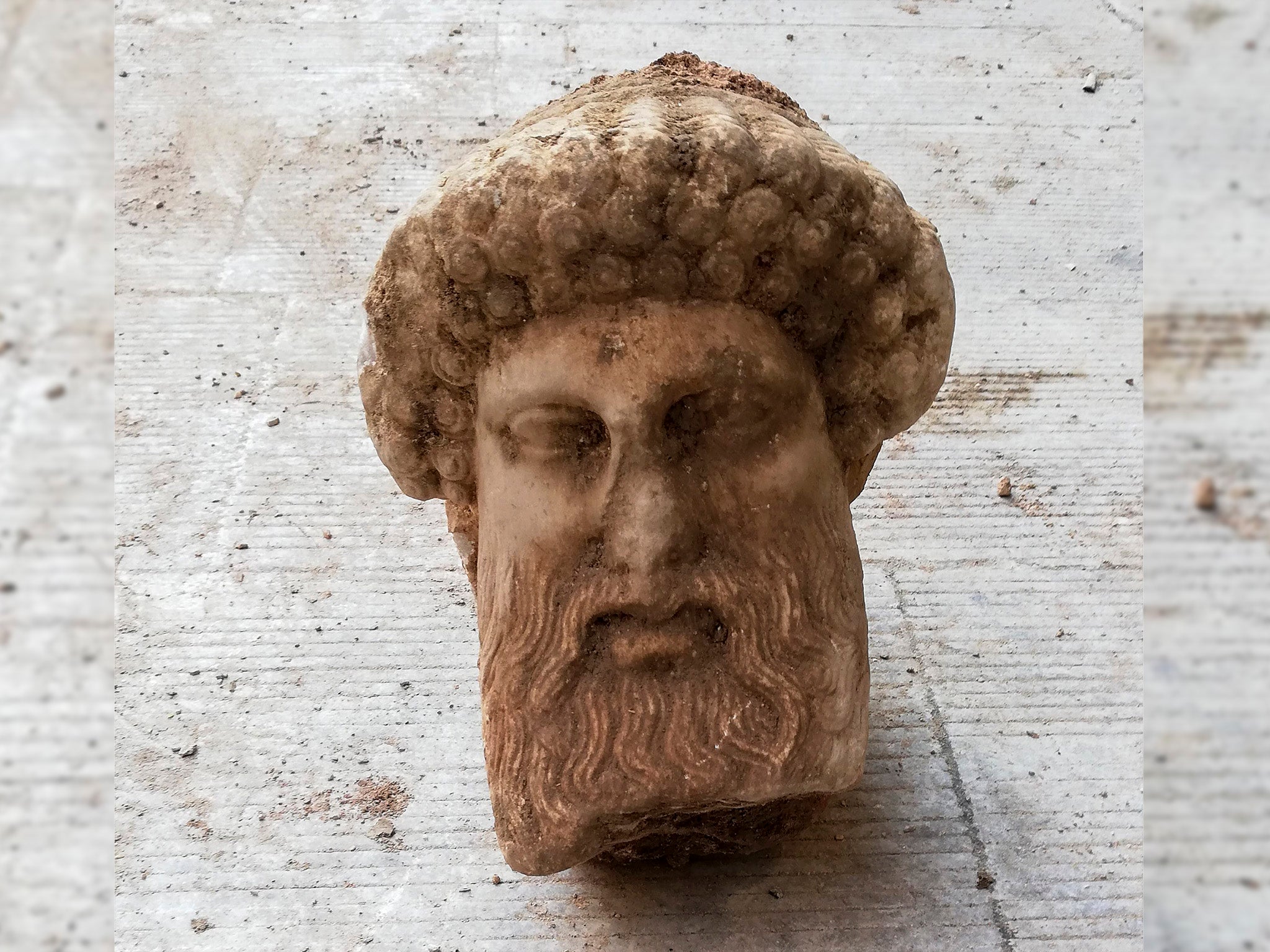Bust of Greek god found during Athens sewage work
According to the Greek culture ministry, the bust dates back to around 300 BC

Greek authorities discovered a bust of the ancient god Hermes during sewage work in central Athens on Sunday, surprisingly in an unscathed condition.
According to the Greek Culture Ministry, the head appears to be dated back to around 300 BC — that is, either from the late fourth century BC or the early third century.
The bust is rare in its portrayal because, according to the ministry, it shows Hermes “at a mature age” whereas most of his caricatures depict him as youthful and athletic, without a beard. The mature imagery of Hermes relates to archaic greek art where he is presented bearded, dressed as a traveller, herald, or pastor.
Hermes is an Olympian deity, considered a messenger of the gods in the ancient greek religion, and is characterised by his “winged sandals” allowing him to move between the realms of the mortal and divine. The deity goes by the name “mercury” and is considered a protector of the human heralds, travellers etc.
The ministry said the bust appears to be a creation of famed Greek sculpture artist Alcamenes, who is noted for the delicacy and finish of his works and flourished in the second half of fifth century BC. Sculpting is one of the most ancient forms of Greek fine art, which is characterised in three major stages as the Archaic (from about 650 to 480 BC), Classical (480–323) and Hellenistic.
However, its peculiar discover from sewage is possibly due to its usage as one of many street markers in ancient Athens at some point, and may have been built into the wall of a drainage duct, the ministry said.
Greece has witnessed many ancient discoveries over the years, including the most hyped discovery from the largest archaeological excavation in 2006 of the ancient cityscape (4th – 9th century AD) revealed beneath modern Thessaloniki. Recently in 2018, Petroglyphs showing a herd of distinctively antlered, now long-extinct dwarf deer on the walls of Asfendou Cave (Sfakia, Crete) were found.
Join our commenting forum
Join thought-provoking conversations, follow other Independent readers and see their replies
Comments



Bookmark popover
Removed from bookmarks